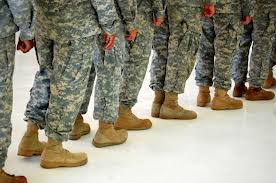We’re extremely proud that US Solar Institute was the first PV installation school tapped by the Department of Veterans Affairs to train America’s returning soldiers under the Veterans Retraining Assistance Program (VRAP). These eligible men and women will be proud members of the alumni who have received hands on solar PV training.
An extension of the GI Bill, VRAP was designed to help returning veterans transition into high-paying jobs with the skills and training they need in today’s competitive workforce. The program has proven especially important during a recession whose high unemployment numbers have hit veterans disproportionately.
One of the reasons why solar energy was recently added to the list of approved VRAP fields was because it remains one of the few industries creating new jobs. In fact, the solar PV industry grew 7% from August 2010 to August 2011 compared to 0.7% for the national economy as a whole.
It seems that many veterans out there are well aware of the tremendous impact that solar installation training can have on their career prospects. Ever since we received official authorization from the Department of Veterans Affairs, our phones have been ringing off the hook. And it hasn’t just been from returning soldiers in the Fort Lauderdale region either. We receive calls from veterans all over the country. The response has been amazing.
However, despite this overwhelming response, the transition from unemployed veteran to certified solar PV installer has been slow for many.
But first a little background.
The actual VRAP program has been and continues to be a resounding success, with Veterans Today reporting that, “The Department of Veterans Affairs has approved more than 36,000 applications for the Veterans Retraining Assistance Program (VRAP), a new job training program designed to place unemployed Veterans back to work.”
Note that this number has since gone up to 45,000, and they’re about to launch phase 2. Secretary of Veterans Affairs, Eric K. Shinseki, followed up with, “The tremendous response illustrates how important this program is in providing veterans the opportunity to find employment in a high-demand field.”
So what then is the problem?
Well – it ultimately comes down to financing. You see, VRAP was designed for higher education programs that typically take 1 to 2 years to complete. And for these, each veteran is allotted up to $1,473 a month to help cover housing, tuition, and school supplies.
At US Solar Institute, ours is an accelerated program that certifies graduates in roughly 1 month (160 hours of practical and theoretical training). Unfortunately, one single installment of $1,473 is not enough to cover a Department of Education-licensed diploma in photovoltaics that costs $7,500.
Even with the VRAP subsidy, veterans eager to get back to work ASAP are still short $6,027 on average.
US Solar Institute has helped to fill this gap by offering an additional $1,470 off its tuition price through a scholarship specifically reserved for veterans. But for many of our returning heroes, even this additional relief is insufficient.
We’re working with Local Veteran Employment Representatives (LVERs) to find a way to bridge this gap. And after extensive discussions with Yellow Ribbon, Joining Forces, NDR, My Next Move, GoldCard, H2H, Hiring Our Heroes, MSEP, and Vet Success, we remain hopeful that a workable, permanent solution will emerge.
In the meantime, we will continue working closely with our veterans to help them make as smooth a transition into the workforce as possible. Their unbelievable patience and endurance are daily reminders of why programs like VRAP were even created to begin with.

